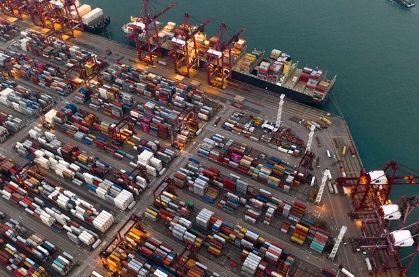What is Documentary Collection and How Does It Support International Trade?
Documentary collection is a financial transaction mechanism used in international trade to facilitate the exchange of goods and payment between a buyer and a seller. This method involves the use of documents that represent the shipment of goods and are handed over to the buyer once payment conditions are met, typically through the mediation of their respective banks. This article explores the process, benefits, and considerations of documentary collection, detailing its role in enhancing the security and efficiency of global trade operations.

What is Documentary Collection?
Documentary collection is a process where the exporter's bank (the remitting bank) forwards documents related to the export of goods to the importer's bank (the collecting bank), with instructions for releasing these documents to the buyer (importer) upon the fulfilment of payment terms. These documents generally include titles to the goods, such as bills of lading, invoices, and insurance documents.
How Does Documentary Collection Work?
The process of documentary collection involves several key steps:
1. Agreement: The buyer and seller agree that payment for a shipment will be handled through documentary collection.
2. Shipment of Goods: The seller ships the goods and then provides the shipping and title documents to their bank.
3. Document Submission: The seller’s bank sends these documents to the buyer’s bank along with instructions for payment.
4. Document Exchange: The buyer’s bank notifies the buyer of the arrival of documents and requests payment or acceptance of a time draft (an agreement to pay by a certain date).
5. Release of Documents: Once the bank receives payment or the time draft is accepted, it releases the documents to the buyer, enabling them to claim the goods from the carrier.
6. Payment Transfer: The buyer’s bank transfers the funds to the seller’s bank, which then credits the seller’s account.
Types of Documentary Collection
1. Documents Against Payment (D/P): Documents are handed over to the buyer only against immediate payment.
2. Documents Against Acceptance (D/A): Documents are handed over against a promise of payment by a future date through acceptance of a time draft.
Benefits of Using Documentary Collection
1. Cost-Effectiveness: Generally less expensive than other methods like Letters of Credit.
2. Simplicity: Less complex and easier to manage compared to Letters of Credit.
3. Security for Seller: Provides control over the goods until payment is secured or the draft is accepted.
4. Flexibility: Offers different terms of payment, allowing negotiation flexibility between buyer and seller.
Challenges and Considerations
• Risk Management: Less secure than a Letter of Credit as the banks are not guaranteeing payment; they only facilitate the transaction.
• Dependence on Buyer's Integrity: Success heavily relies on the buyer’s willingness and ability to pay upon presentation of documents.
• Legal and Regulatory Compliance: Both parties must ensure compliance with the international trade laws and regulations relevant to their countries.
How to Implement Documentary Collection
• Select a Trusted Banking Partner: Work with banks that have robust international trade financing departments.
• Clear Terms with Trade Partners: Clearly define payment terms and conditions in the sales contract to ensure all parties have aligned expectations.
• Document Preparation: Ensure all documents are accurately completed and presented to avoid delays or rejections.
Who Should Use Documentary Collection?
• Exporters Seeking Payment Security: Particularly useful for sellers in international transactions who seek more security than open account transactions but do not require the stringency of a Letter of Credit.
• Buyers with Established Relationships: Buyers who have a good track record or established relationships with sellers may find that documentary collection offers a balance between flexibility and security.
Documentary collection is a valuable trade finance tool that balances cost, ease of use, and payment security. It is especially suited for trusted trade relationships where the cost and complexity of a Letter of Credit are not warranted. By understanding and utilizing this method, companies can enhance their international trade operations effectively.
Related articles

 WeChat of CBiBank
WeChat of CBiBank